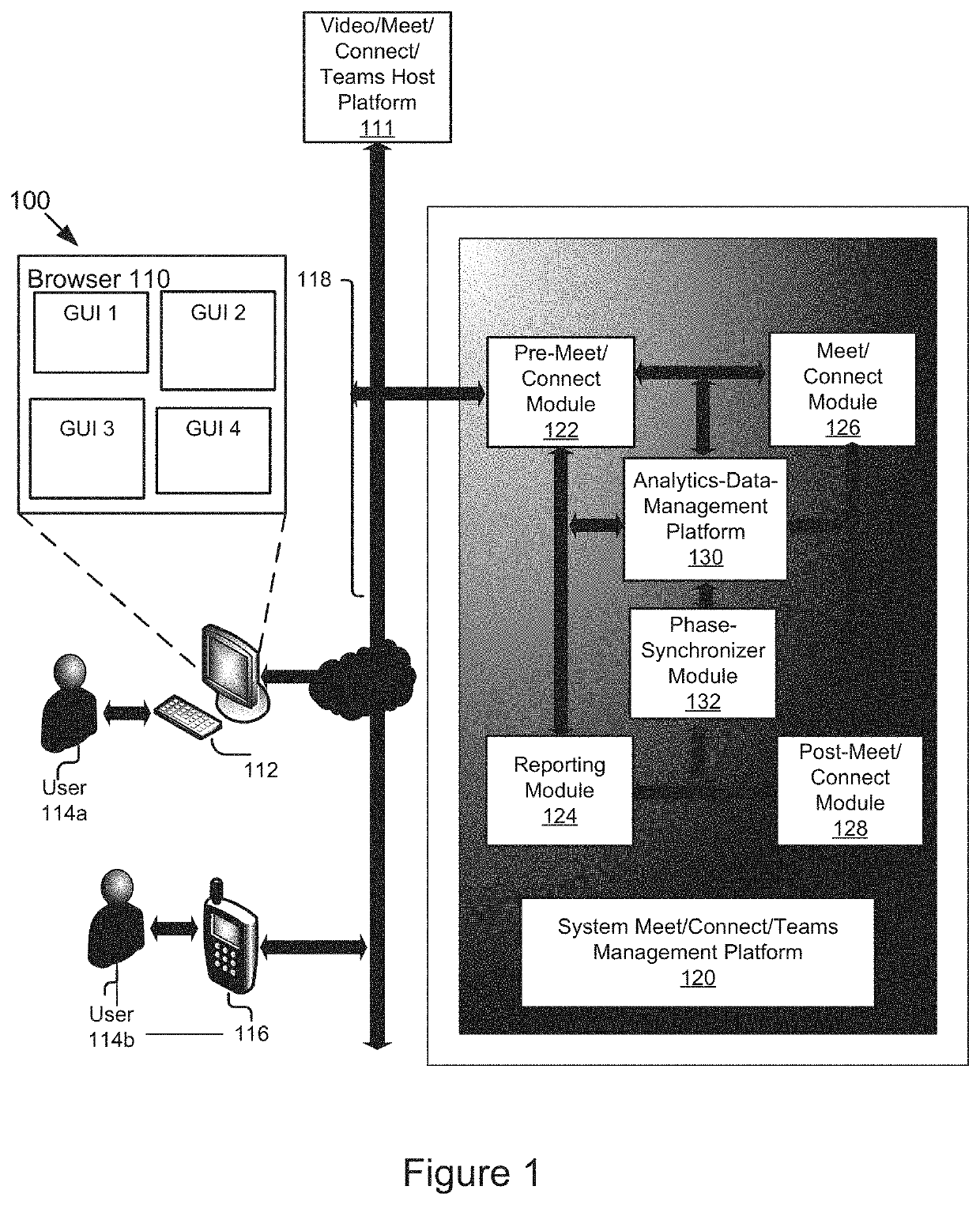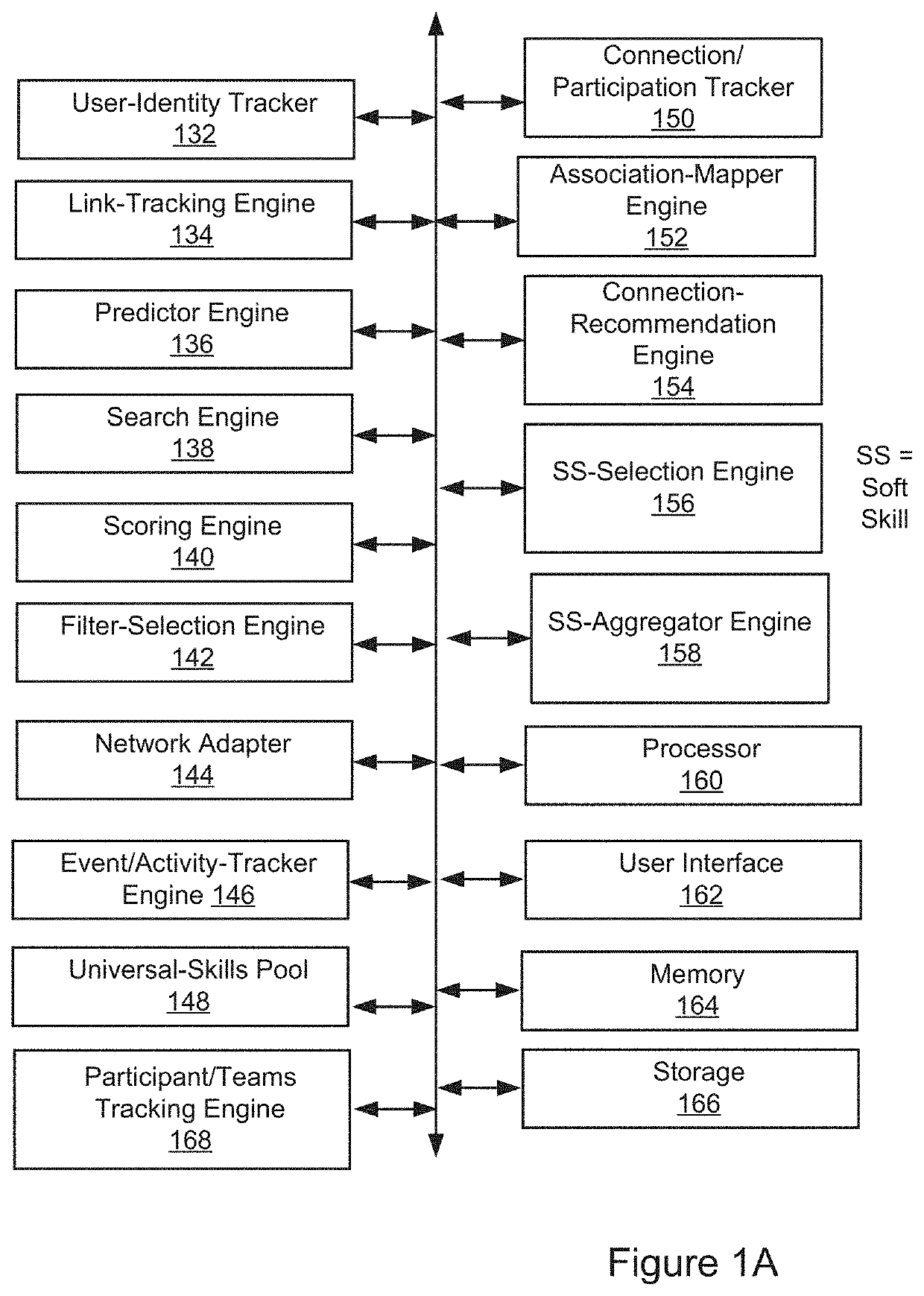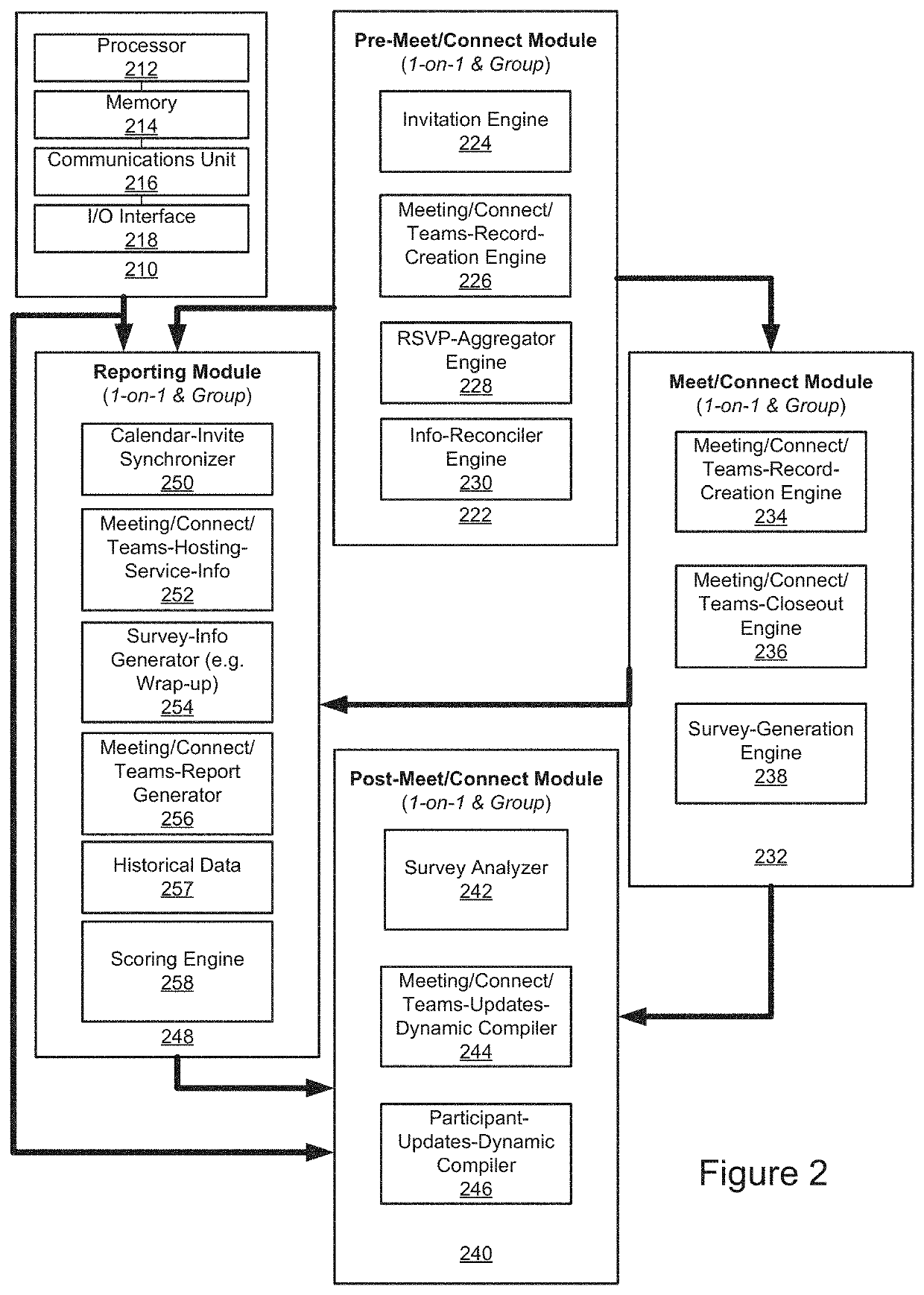Although used extensively by many, there are many problems that are experienced.
One key problem in managing events or meetings is that they are typically handled as one-time, single events or sessions among people who may not have met before.
Yet, problems still exist.
Yet, these platforms have limitations because of inconsistent use and
enforcement and the negative
impact of social norms.
Their structures are often inflexible, forcing organizations to use the platform's preferred agenda format with a uniform approach that applies equally to all organizations, with no existing capability to customize the approach and content.
For example, there is no way to either prioritize topics or indicate a
time frame to address each.
Even in scenarios where the meeting leaders create an agenda, they fail to circulate them in advance to solicit constructive feedback.
These platforms are also limited and therefore, not used consistently.
They fail to assist meeting leaders with determining the right order for agenda items or allocating time to each item.
Yet, in today's complex
business environment, different types of meetings or events require different management and approaches.
For example, some participants are adept at decision-making but not the best at
brainstorming ideas.
Others are not able to.
These platforms are limited because the information shared is not vetted for accuracy.
Nor do these platforms provide behavioral information or data on the participants, which is valuable.
These platforms lack mechanisms to accomplish clear outcomes.
For instance, with respect to desired outcomes for a meeting or event, many meeting leaders do not clearly articulate the goals of a meeting to the meeting participants in advance of the meeting.
The current interface methodologies do not provide any interface actions that facilitate subsequent actions by participant based on the meeting type.
A significant
disadvantage lies in the fact that these types of meetings often result in significant lost productivity and diminished team morale.
These
software approaches have significant limitations.
Yet, another drawback is that participants do not receive preparation materials in advance.
If they do distribute materials in advance, it if often immediately before the meeting, giving participants limited or no time to review in advance of the meetings, much less, be able to suggest changes or add additional materials.
These approaches have drawbacks as these actions are inconsistent and subject to social norms.
The drawbacks are exacerbated by the increasing use of different and sometimes incompatible methods and
software systems, even within organizations.
Moreover, there is no way to track if participants have actually read the materials provided in advance.
A
disadvantage in existing
software platforms is that participants and others who prepare meeting materials are not given clear instructions.
And meeting leaders may be inconsistent from meeting to meeting—for some meetings they let meeting participants know, while for other meetings they do not.
Yet, many meeting leaders are not.
Often, they are submitted in incompatible formats.
And meeting leaders may be inconsistent from meeting to meeting; for some meetings they let meeting participants know, while for other meetings they do not.
As a result, in some cases meeting participants may receive materials in formats incompatible with their own software.
And meeting leaders may be inconsistent from meeting to meeting.
And meeting leaders may be inconsistent from meeting to meeting—for some meetings they let meeting participants know, while for other meetings they do not.
Yet, all of these existing approaches have limitations.
They cannot be easily enforced nor are they consistent and they are subject to social norms within and across teams and organizations.
These problems are exacerbated by the increasing use of different and sometimes incompatible methods and software systems even within organizations.
It is common for agendas to be sent via inconsistent methods and in inconsistent formats and it is hard to keep track of them.
If an agenda is created, many meeting leaders will circulate it via different and inconsistent methods.
This makes it difficult for meeting participants to know where to look for a meeting agenda, with the result that some participants may not be properly prepared for the meeting.
Some organizations set “standards” for how they want meeting agendas circulated but these are not enforced and subject to the social norms of the team and organization, and the preferences of meeting leaders and management.
All these existing solutions have limitations in terms of
enforcement and are subject to the social norms of the organization, teams, and preferences of individual meeting leaders and managers.
These existing problems are exacerbated by the increasing use of different and sometimes incompatible methods and software systems even within organizations.
Other problems exist with meeting invites that convey inconsistent information about the meeting.
Many meeting leaders do not include additional information, with the result that some participants may not be properly prepared for the meeting.
But these features and applications are inconsistently used and do not encourage the meeting leader to convey critical information about the meeting.
In addition, some existing solutions do not allow a meeting leader to attach documents such as agenda, participant
list, outcomes, or informational materials to the invitation itself.
All these existing solutions have limitations in terms of
enforcement and are subject to the social norms of the organization, teams, and preferences of individual meeting leaders and managers.
And many meeting leaders are inconsistent from meeting to meeting.
All these existing solutions have limitations in terms of enforcement and consistency and are subject to individual preferences and the social norms of the organization and teams.
In many instances, meeting participants don't know why they are invited or what they are responsible for.
Many meeting leaders are inconsistent from meeting to meeting.
But these are not enforceable, nor are they consistently applied, which allows meeting leaders to make their own inconsistent choices.
Furthermore, scheduling meetings is challenging.
None of these approaches solves the problem of figuring out which meeting participants' schedules must be accommodated and which ones are not.
Nor is there any way to communicate the way in which users will participate, whether in person, by phone or video.
This makes it difficult to properly plan for and manage a meeting.
Yet, neither of these approaches solves the problem of assuring that meeting invitees will respond punctually.
This approach doesn't stop a person from double booking.
Further, these existing solutions have limitations in terms of enforcement and consistency and are subject to individual preferences and the social norms of the organization and teams.
This often confuses attendees about why they are at the meeting, or what the purpose of the meeting is, and can have a negative
impact on participation.
When it is used, it often results in a large percentage of the meeting being focused on introductions rather than to accomplish the reason for the meeting in the first place.
To date, there are no existing software solutions that avoid the challenge of people attending meetings uninvited via a meeting invite; appearing as a surprise to the “official” meeting invitees.
Even during the meeting, in many situations, participants arrive late, despite knowing the real
start time.
While many meeting participants arrive at the meeting at the scheduled time, many participants arrive late, including meeting leaders who may arrive late for their own meetings.
Meetings where one or more participants arrive late result in lost productivity, workplace friction, and reduced morale.
These features have limitations, including that such alerts are easily ignored or overlooked.
Moreover, they are not easily enforceable.
And, they do not communicate the late status to other meeting participants, and are subject to the social norms of the organization, teams, and of meeting leaders and management.
In many instances, meetings start late, often after the scheduled
start time.
This can result in uncertainty about the meeting's actual
start time as opposed to the scheduled start time.
In some instances, some meeting participants arrive late because they do not believe that meeting will start as scheduled.
These approaches have limitations, both inherently, such as creating de facto delays in starting the meeting and degrading the meeting experience for some participants, and also due to inconsistent use of the software, and varying social norms of the organization, teams, and meeting leaders and management.
In addition, many participants do not bring the materials specified as being necessary to the meeting.
These approaches have limitations including that they are cumbersome to use and are often used inconsistently because of the varying social norms of the organization, teams, and meeting leaders and managers.
And if they are told in advance, it might be right before the meeting with limited or no time to prepare in advance of the meeting.
And with limited time, if any, to suggest changes to their role or participation.
In addition, participants don't often know each other.
Nor do they know any information about each participant in advance of the meeting, therefore, unable to set or manage expectations.
Existing systems such as
Crystal Knows and LinkedIn often provide unreliable information that is often out of date or taken out of context.
This technique is inconsistently used and when it is used often results in a large percentage of the meeting being focused on introductions rather than on the reason that the meeting was put together in the first place.
This technique is inconsistently used and when it is used often results in a large percentage of the meeting being focused on introductions rather than on the reason that the meeting was put together in the first place.
Many meeting participants offer their opinion regardless of how popular they believe it will be, but many meeting participants will not offer their opinions because they think those opinions are contrary to those of the meeting leader or to the meeting
consensus, or for other reasons.
These approaches have limitations due to inconsistent use and social norms of the organization, teams, and meeting leaders and management.
These approaches have limitations due to inconsistent use and social norms of the organization, teams, and meeting leaders and management.
Many meeting leaders do not moderate their meetings in a way that includes meeting participation by all meeting participants.
These approaches have significant limitations due to inconsistent use and social norms of the organization, teams, and meeting leaders and management.
Another drawback is that the agenda is not adhered to.
Adding or changing an agenda leaves no time for preparation and / or may make the preparation not worthwhile.
Many meetings do not estimate how much time is planned for each agenda item.
These applications have limited
efficacy because they don't solve the lack of agenda in the first place or the problems that arise when the agenda is changed real time.
These approaches have significant limitations in that their enforcement is inconsistent and subject to social norms of the organization, teams, and meeting leaders and management.
In the latter situation, participants are not prepared.
These approaches have significant limitations in that their enforcement is inconsistent and subject to social norms of the organization, teams, and meeting leaders and management.
This problem is exacerbated by the increasing use of different and sometimes incompatible methods and software systems even within organizations.
In many instances, participants leave the meeting without obtaining value.
In many instances, participants leave the meeting without achieving the outcome they were seeking.
This may result in meeting participants (including meeting leaders) not attending the entire meeting or being late for subsequent meetings.
Meetings that run into overtime leave the participants in a quandary.
There are no current systems that offer software that directly assists meeting leaders and participants to end a meeting on time.
Left to the participant's will, the minutes may not be comprehensive or complete nor circulated to any or all of the meeting participants.
Typically, the notes are not the same, causing
confusion in recollections of what transpired in the meeting.
However, these approaches have limitations.
Their features are cumbersome to use, are sometimes inaccurate, and are subject to social norms within organizations, teams, and meeting leaders and management.
In many current scenarios with virtual meetings, some participants don't know how to use the virtual meeting technology or can't find the call-in information.
There are many different virtual meeting technology solutions, leaving participants lost when switching systems.
The burden falls on the meeting participants and meeting leaders to keep track of the “dial-in” information for the virtual meeting (e.g.,
conference call or video call).
If one meeting attendee fails to join, the outcome of the entire meeting is affected.
These problems are magnified when a meeting includes one or more people from one or more outside organizations.
Some software solutions have created features in their virtual meeting software to enable muting either by the individual participant or by the meeting “host.” These approaches have limitations because their use is subject to social norms of the organization, teams, and meeting leaders and management.
In addition, toggling between muted and unmuted states causes a
lag that often results in participants talking over each other.
Variability in network speed can cause video to be “jerky” and slow, affecting the flow of the meeting.
And when the video / camera is used, there is
background noise, some meeting leaders and meeting participants try to limit it by asking or reminder meeting participants to mute their microphones (on their phone or computer or other device) when they are not speaking.
Some solutions have features in their virtual meeting software to enable muting either by the individual participant or by the meeting “host.” These approaches have limitations because their use is inconsistent and subject to social norms of the organization, teams, and meeting leaders and management.
In addition, toggling between muted and unmuted states causes a
lag which often results in participants talking over each other.
This approach has inherent limitations because use by participants is inconsistent.
This approach has inherent limitations as the meeting host may not know how to use their feature, or know the name of the person who has logged in on an unidentified phone number.
In all the cases, solving for this approach is highly dependent on the actions of the meeting participants and is inconsistently applied including merged for some participants and not for others in the same video meeting.
These approaches have limitations because their use is inconsistent and subject to social norms.
These approaches have limitations in that they are not consistently used and are subject to social norms and the availability of meeting leaders or others to make an official
record.
Moreover, it is not always clear what follow-ups have been agreed to and who is responsible for them.
There are different approaches to solving this problem with lack of
clarity on the agreed-to follow-ups.
Yet all of these approaches have limitations.
Their use is inconsistent and subject to social norms of the organization and team, resulting from the amount of effort they require from meeting leaders and participants.
There is no reliable way to know if the meeting achieved its objectives.
In the case of
professional development, this approach has limitations because their enforcement is inconsistent and subject to the social norms of the organization and the teams.
There is no way of knowing if participants (leaders or attendees are doing better, worse, etc.
And if they do, they often have incomplete notes or misattribute participation.
All these approaches have limitations because their enforcement is inconsistent and subject to social norms of the organization and teams, and in that they require significant human intervention to be of use.
In addition, all the current systems only provide a single approach for all, stifling any creativity in the participants.
As a result, many meeting leaders and participants (especially ones who are good at meetings) choose not to adopt these software solutions because they fail to give them what they need.
This is a crucial problem with existing software solutions.
They are limited in their capabilities, restricting and not tailored to meet the user's perspective or preference.
Therefore, many drawbacks exist and better solutions are needed.
 Login to View More
Login to View More  Login to View More
Login to View More 


